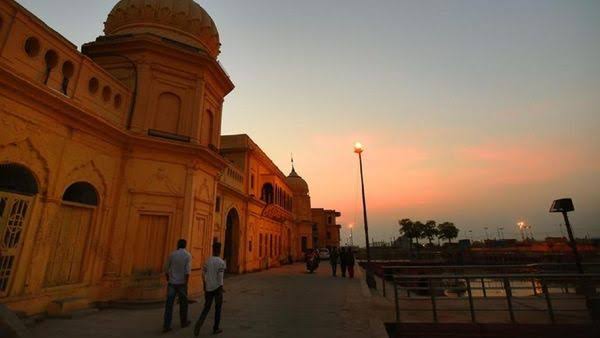The historic judgement solving the dispute regarding Babri Masjid and Ram Mandir was finally solved on 9 November, 2019. The verdict by the Supreme Court states that a temple should be constructed around the 2.77-acre so of Uttar Pradesh in Ayodhya while Muslims will be given an entire alternative piece of land for building the mosque. This entire religio-political problem finally comes to a solution.
The Five-judge Constitution bench headed by Chief Justice of India, Ranjan Gogoi stated that the site where four centuries-old Babri Masjid was demolished in 1992, should be given to a trust that must report back within three months regarding the construction of a temple. However, conditions and terms were implied for the construction of this temple.
Ayodhya Verdict: The History Dates back to 1850
The legal tussle regarding the mosque began in 1950, where it was being said that the deities were suspiciously placed within the structure. Hindu groups claimed that the mosque was built on top of the birthplace of Lord Rama. But, the Muslims contested this. But it is not the 1950s but 1850 that the history of temple and tussle dates back yo.
[addthis tool=”addthis_relatedposts_inline”]The demolition of Babri Masjid not only led to huge communal rites but also gave way to rise of Bharatiya Janata Party, the party in the forefront regarding the land of Ram Mandir. It is anticipated that more than 2000 people were found dead in the place during that time. This historic decision brought a complete change in the country’s politics.
The case verdict of 1045 pages stated that the Archaeological Survey of India produced reports that clearly showed that the remains of the building under the mosque weren’t Islamic. The judges also claimed that the presence of Ram Chabutra, Sita Rasoi and Bhandar Grih are proof of the religious sanctity of the place. While CJI Gogoi read out the historic verdict, lawyers and Hindu activities outside the Supreme Court kept changing “Jai Shree Ram” and marked their celebration.
Allahabad High Court’s Decision

The decision of the Allahabad High Court (30 October, 2010) was also ruled out. The decision had divided the place into three parts: The Ram Lalla Idol meant for the part Ram Lalla Virajman, Sita Rasoi and Ram Chabutra for Nirmohi Akhara and Sunni Waqf Board to get another part. While this sounded fair during that time, all three boards revolted against it. On October 16, a mediation could still not be sorted out but the tussle remained.
“On the balance of probabilities, there is clear evidence to indicate that the worship by the Hindus in the outer courtyard continued unimpeded in spite of the setting up of a grill-brick wall in 1857. Their possession of the outer courtyard stands established together with the incidents attaching to their control over it,” said the top court in its ruling on Saturday.
“On the balance of probabilities, there is clear evidence to indicate that the worship by the Hindus in the outer courtyard continued unimpeded in spite of the setting up of a grill-brick wall in 1857. Their possession of the outer courtyard stands established together with the incidents attaching to their control over it.” The court further added, “As regards the inner courtyard, there is evidence on a preponderance of probabilities to establish worship by the Hindus before the annexation of Oudh by the British in 1857. The Muslims have offered no evidence to indicate that they were in exclusive possession of the inner structure prior to 1857 since the date of the construction in the sixteenth century.”
Ruling out of Nirmohi Akhara
The claims of Nirmohi Akhara were ruled out as well.
“Suit 5 has been held to be maintainable at the behest of the first plaintiff (the deity of Lord Ram) who is a juristic person. The third plaintiff (next friend) has been held to be entitled to represent the first plaintiff. Suit 3 filed by Nirmohi Akhara has been held to be barred by limitation.”
The Ayodhya Muslim Community however will be getting land of 5-acres as a compensation of the broken Babri Masjid.

“Having weighed the nature of the relief which should be granted to the Muslims, we direct that land measuring five acres be allotted to the Sunni Central Waqf Board either by the Central Government out of the acquired land or by the Government of Uttar Pradesh within the city of Ayodhya.”
Before proceeding with the verdict, the security was tightened in Ayodhya and all other parts of India, owing to the chances of communal unrest. Regular travellers were thoroughly checked and commandos were at regular service. Twitter was full of politicians, and netizens seeking for peace and harmony. However, there have been no reported cases of unrest.
Prime Minister Narendra Modi took to Twitter to hail the decision and said that finally, the long-lasting dispute was sold.
PM Modi in a tweet added, “Every point of view was given adequate time and opportunity to express differing points of view. This verdict will further increase people’s faith in judicial processes.”






















